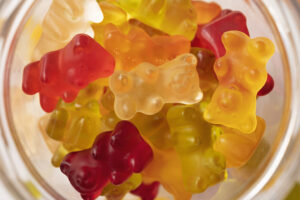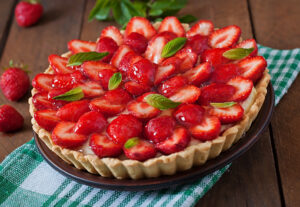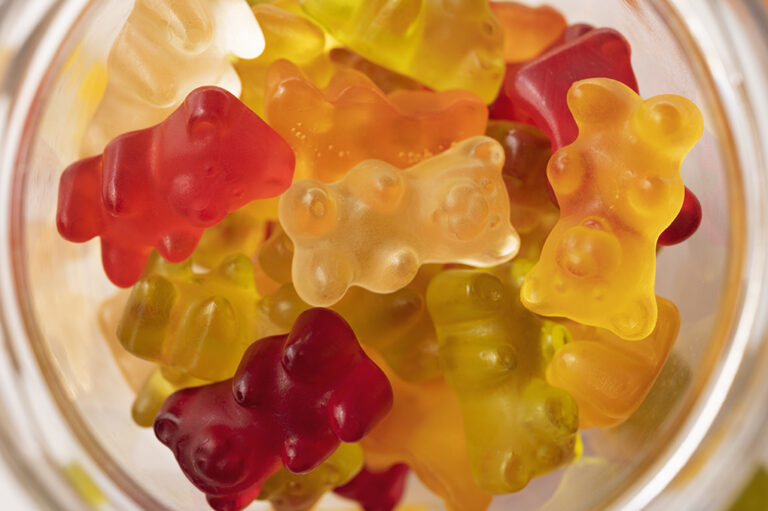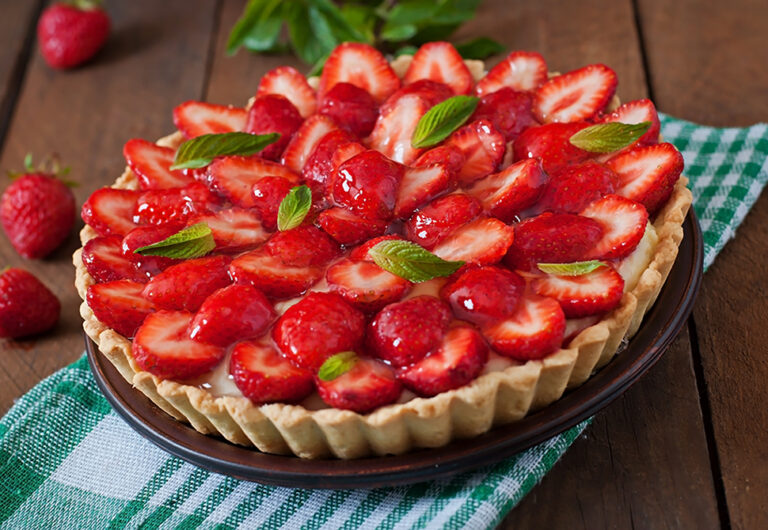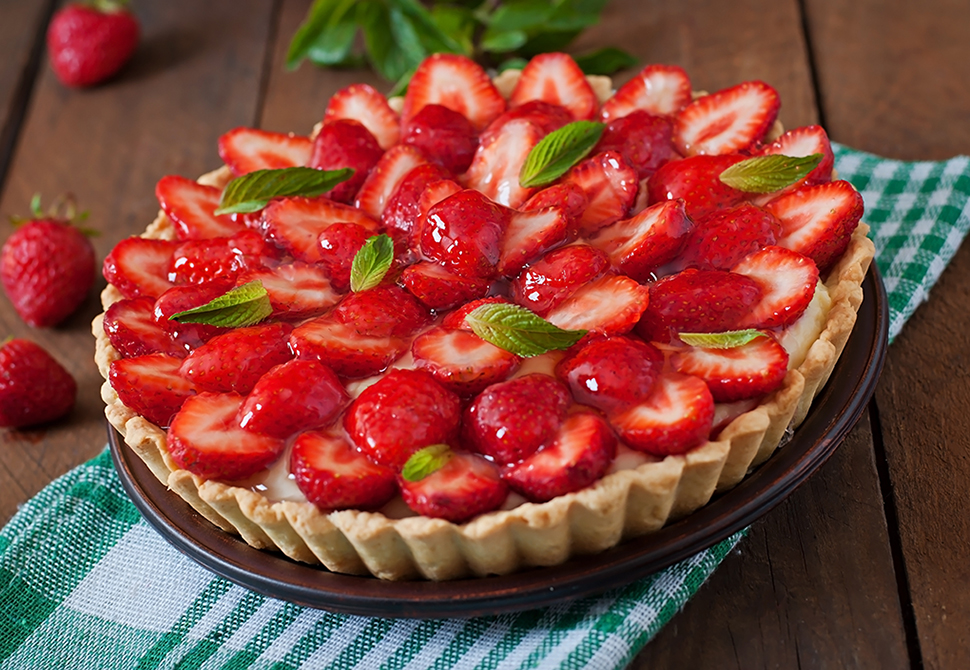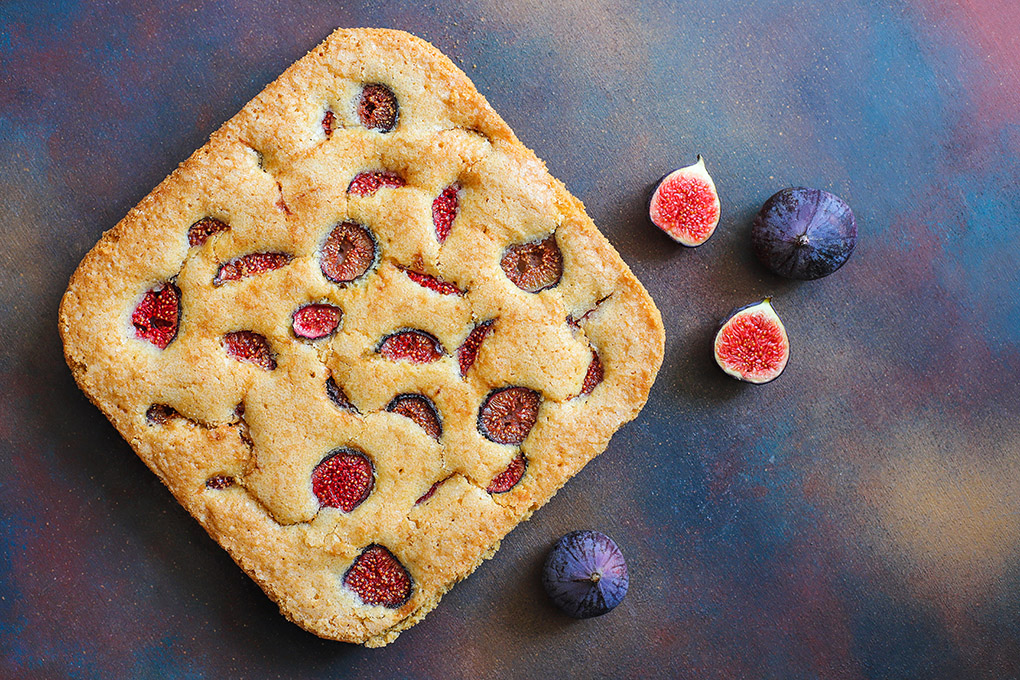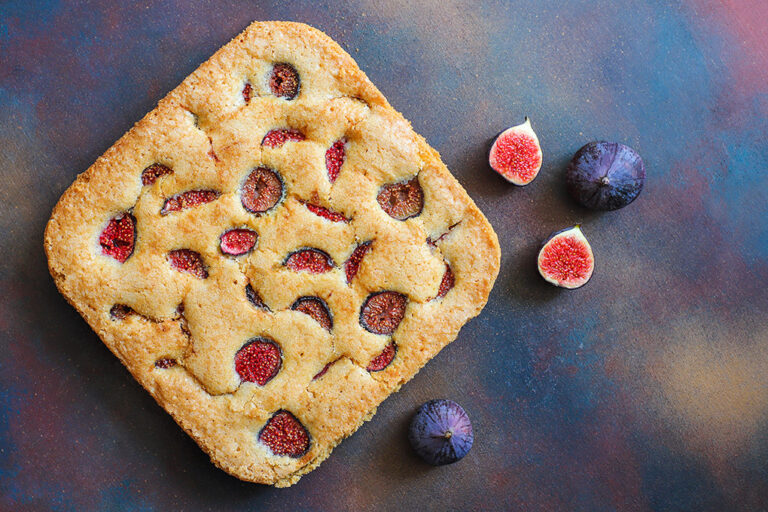More To Read
The Joy of Jelly: A Sweet Delight in Every Shape and Flavor
Jelly is one of those magical desserts that never fails to bring a smile to the face of anyone who enjoys it. Its shimmering, translucent appearance, coupled with a delicate texture and vibrant flavors, makes jelly a favorite treat for all ages. But there’s more to jelly than meets the eye. In this article, we’ll explore the world of jelly, from its fascinating history to tips on making the perfect jelly at home.
The History of Jelly
Jelly has a long and storied history, dating back centuries. The earliest forms of jelly were made using natural gelling agents found in animal products, such as gelatin derived from boiled bones and cartilage. These jellies were often savory rather than sweet and were served as part of elaborate feasts in medieval Europe.
It wasn’t until the 19th century that jelly began to take on the sweet, fruity form we recognize today. The discovery and refinement of fruit pectin, a natural gelling agent found in fruits, allowed for the creation of fruit jellies that were both delicious and visually appealing. With the advent of commercial gelatin in the late 1800s, jelly became even more accessible, and its popularity soared.
The Art of Making Jelly
Making jelly is both an art and a science. The key to a successful jelly lies in achieving the perfect balance between the gelling agent, liquid, and flavoring. Here’s a breakdown of the essential components of jelly:
1. The Gelling Agent:
Gelatin: The most common gelling agent used in jelly is gelatin, which gives jelly its characteristic wobble. Gelatin is flavorless and odorless, making it ideal for a wide range of flavors.
Pectin: For fruit-based jellies, pectin is often used. Pectin is naturally found in fruits like apples and citrus and helps to set the jelly while enhancing the fruit flavor.
Agar-Agar: For a vegetarian or vegan alternative, agar-agar, derived from seaweed, is a popular choice. It creates a firmer jelly and is often used in Asian desserts.
2. The Liquid:
Juice: Fruit juices are commonly used as the base for jelly, providing both flavor and color. The juice can be freshly squeezed or store-bought, depending on the desired flavor.
Infusions: Herbal teas, coffee, or even wine can be used as a liquid base for more adventurous jelly flavors.
3. The Sweetener:
Sugar: Sugar is the traditional sweetener used in jelly, helping to enhance the flavor of the fruit or other ingredients. The amount of sugar can be adjusted to taste, but it also plays a role in the jelly’s texture.
Honey or Agave: For a natural alternative, honey or agave syrup can be used. These sweeteners add their own unique flavors to the jelly.
4. The Flavorings:
Fruits: Fresh or pureed fruits are often added to jelly to intensify the flavor and add texture. Berries, citrus, and tropical fruits are popular choices.
Herbs and Spices: For a more complex jelly, herbs like mint or spices like cinnamon can be added to create interesting flavor profiles.
Tips for Perfect Jelly Every Time
Making jelly may seem simple, but achieving the perfect set and flavor requires attention to detail. Here are some tips to ensure your jelly turns out perfectly every time:
Measure Accurately: The ratio of gelatin or pectin to liquid is crucial for the jelly to set properly. Always measure carefully to avoid a jelly that’s too soft or too firm.
Heat Gradually: When dissolving gelatin or pectin, heat the liquid gradually and avoid boiling, as this can affect the gelling process.
Chill Completely: Allow the jelly to set fully in the refrigerator before unmolding or serving. Rushing this process can result in a jelly that doesn’t hold its shape.
Experiment with Layers: For a stunning visual effect, try layering different flavors or colors of jelly in a single mold. Allow each layer to set before adding the next.
Creative Jelly Ideas
Jelly is incredibly versatile, and with a little creativity, you can transform this simple dessert into a show-stopping centerpiece. Here are some ideas to inspire your next jelly creation:
Fruit-Inspired Jelly: Create a fruit jelly that mimics the appearance of whole fruits. Use molds shaped like fruits and add small pieces of fruit inside the jelly for a realistic effect.
Jelly Cubes: Cut set jelly into small cubes and serve them in a bowl for a fun, bite-sized treat. Mix different flavors and colors for a vibrant presentation.
Layered Jelly Desserts: Combine layers of jelly with layers of cream or custard for a sophisticated dessert that’s both beautiful and delicious.
Sparkling Jelly: Add a touch of sparkling wine or champagne to your jelly mixture for a fizzy, festive treat perfect for celebrations.
Conclusion
Jelly is more than just a wobbly dessert—it’s a canvas for culinary creativity. Whether you prefer a simple fruit jelly or an elaborate layered creation, there’s no end to the possibilities with this delightful treat. At Teonzo, we celebrate the joy that jelly brings to every occasion and encourage you to experiment with flavors, shapes, and textures to create your own jelly masterpieces.
Happy jiggling!
The World’s Best Tarts: A Journey Through Flavors and Cultures
Tarts are a universal symbol of indulgence. From the bustling streets of Paris to the cozy kitchens of Italy, tarts have captured the hearts of dessert lovers across the globe. These versatile treats offer a perfect balance of textures and flavors, making them a favorite in countless cultures. In this article, we’ll explore some of the best tarts the world has to offer, each with its own unique twist on this classic dessert.
1. French Lemon Tart (Tarte au Citron)
When it comes to tarts, the French are masters of the craft. The Tarte au Citron is a shining example of French pastry perfection. This tart features a buttery, flaky crust filled with a tangy lemon curd that’s both refreshing and rich. Often topped with a light dusting of powdered sugar or a dollop of meringue, the lemon tart is a staple in French patisseries and a must-try for any tart lover.
Why it’s the Best:
The perfect balance of tartness and sweetness.
A crisp, buttery crust that complements the smooth lemon filling.
Simple yet elegant, it’s a dessert that never goes out of style.
2. Italian Crostata di Frutta
The Crostata di Frutta is Italy’s answer to the fruit tart, showcasing the country’s love for fresh, seasonal ingredients. This rustic tart is made with a shortcrust pastry, spread with a thin layer of apricot or raspberry jam, and topped with a colorful array of fresh fruits like berries, peaches, and figs. The fruits are often arranged in a beautiful pattern, making this tart as much a feast for the eyes as it is for the taste buds.
Why it’s the Best:
A celebration of fresh, seasonal fruits.
The jam layer adds a delightful sweetness that complements the fruit.
It’s a versatile tart that can be adapted to whatever fruits are in season.
3. Portuguese Pastéis de Nata
While technically a custard tart, the Pastéis de Nata deserves a spot on any list of the world’s best tarts. Originating from Portugal, these small tarts are made with a flaky, buttery crust filled with a rich, creamy custard that’s caramelized on top for a slight crunch. Often dusted with cinnamon or powdered sugar, Pastéis de Nata are a beloved treat in Portugal and beyond.
Why it’s the Best:
The combination of a crisp, flaky crust and creamy custard is irresistible.
The caramelized top adds a unique texture and flavor.
It’s a bite-sized tart that’s perfect for enjoying with a cup of coffee.
4. American Pecan Tart
The Pecan Tart is a Southern classic in the United States, particularly popular during the holiday season. This tart is made with a buttery crust filled with a mixture of pecans, eggs, sugar, and corn syrup, resulting in a rich, sweet, and nutty dessert. The pecans are often arranged in a decorative pattern on top, making this tart as beautiful as it is delicious.
Why it’s the Best:
The sweet, caramel-like filling pairs perfectly with the crunch of pecans.
It’s a rich, indulgent dessert that’s perfect for special occasions.
The combination of flavors and textures is a true taste of Southern comfort.
5. British Bakewell Tart
The Bakewell Tart is a traditional British dessert that’s a favorite in tea rooms across the UK. This tart features a shortcrust pastry base spread with a layer of raspberry jam, topped with a frangipane (almond-flavored filling), and often finished with flaked almonds or icing. The Bakewell Tart is a delightful combination of flavors, with the sweet almond frangipane contrasting beautifully with the tartness of the raspberry jam.
Why it’s the Best:
The almond and raspberry pairing is a match made in heaven.
The frangipane adds a rich, moist texture to the tart.
It’s a classic British dessert that’s perfect for afternoon tea.
6. Japanese Matcha Tart
For those who love a modern twist on traditional desserts, the Matcha Tart from Japan is a must-try. This tart combines the earthy, slightly bitter flavor of matcha (green tea) with a sweet, creamy filling, all encased in a delicate pastry crust. The vibrant green color of the matcha makes this tart a visual standout, while the unique flavor profile offers a sophisticated dessert experience.
Why it’s the Best:
The matcha flavor adds a unique, sophisticated twist to the traditional tart.
The vibrant green color is striking and elegant.
It’s a perfect dessert for those who appreciate Japanese flavors.
Conclusion
Tarts are a global phenomenon, with each culture bringing its own flair to this beloved dessert. Whether you prefer the tangy zing of a French Lemon Tart or the nutty richness of an American Pecan Tart, there’s a tart out there for every palate. At Teonzo, we celebrate the diversity and creativity that tarts offer, and we hope this journey through the world’s best tarts inspires you to explore new flavors and try your hand at making these delicious treats at home.
Bon appétit!
The Art of Sweetness: Exploring the World of Tarts and Jellies
Welcome to Teonzo, where the sweet symphony of tarts and jellies takes center stage. These two delectable treats have graced dessert tables across the globe, delighting taste buds with their vibrant flavors, textures, and endless creativity. Let’s dive into what makes tarts and jellies so irresistible and how you can create your own masterpieces at home.
The Timeless Appeal of Tarts
Tarts are a classic dessert that dates back centuries, known for their delicate pastry crusts filled with an array of sweet or savory fillings. The beauty of a tart lies in its versatility. From a zesty lemon tart that packs a citrus punch to a rich chocolate ganache tart that satisfies every chocoholic’s dream, there’s a tart for every occasion.
Why Tarts?
Versatility: Tarts can be made with various fillings such as fruits, custards, chocolate, and even nuts. The possibilities are endless.
Aesthetic Appeal: With their beautifully arranged fruits or intricate designs, tarts are often as pleasing to the eye as they are to the palate.
Texture: The contrast between a crisp, buttery crust and a creamy or fruity filling creates a delightful textural experience.
Tips for a Perfect Tart:
Master the Crust: A tart’s foundation is its crust. Ensure it’s evenly rolled and blind-baked if necessary to prevent sogginess.
Choose Quality Ingredients: Whether it’s fresh fruits or high-quality chocolate, the ingredients you use will elevate your tart.
Get Creative with Decoration: Use edible flowers, powdered sugar, or a drizzle of glaze to add the finishing touches.
The Jewel-Like Beauty of Jellies
Jellies, with their shimmering appearance and smooth texture, are a treat that captures the essence of fruit in a way no other dessert can. They can be simple, showcasing a single fruit flavor, or complex, with layers of different jellies creating a beautiful mosaic of color and taste.
Why Jellies?
Refreshing: Jellies are light and refreshing, making them a perfect dessert for warmer weather or as a palate cleanser.
Fun to Make: From selecting the molds to watching the jelly set, making jelly is an enjoyable process that invites creativity.
Visual Appeal: The translucent nature of jelly allows for stunning visual effects, especially when layered or embedded with fruits or flowers.
Tips for a Perfect Jelly:
Gelatin Matters: Ensure you use the right amount of gelatin for the perfect set – too much, and it’s rubbery; too little, and it won’t hold its shape.
Flavor Balance: Balance sweetness with a hint of acidity from lemon juice or citric acid to make the flavors pop.
Molding Mastery: Lightly oil the mold before pouring in the jelly for easy release, and be patient – let it set fully in the fridge for the best results.
Bringing It All Together: Tart and Jelly Combos
Why choose between a tart and jelly when you can have both? Combining the two creates a dessert that’s not only visually stunning but also a textural delight. Imagine a crisp tart shell filled with a layer of fruit jelly, topped with fresh fruits, and finished with a glaze. The contrast between the firm jelly, the crunchy tart, and the juicy fruits is nothing short of perfection.
Try This at Home:
Strawberry Jelly Tart: A buttery tart shell filled with smooth strawberry jelly, topped with a layer of fresh strawberries.
Citrus Tart with Orange Jelly: A zesty citrus tart paired with a bright orange jelly, garnished with candied citrus peels.
Layered Raspberry Tart: Layers of raspberry jelly and cream in a chocolate tart shell, topped with fresh raspberries and a dusting of powdered sugar.
Conclusion
At Teonzo, we celebrate the artistry and joy of creating sweets that bring happiness to every bite. Whether you’re a tart enthusiast, a jelly lover, or someone who appreciates the combination of both, we hope to inspire your next sweet creation. Remember, the best desserts are made with love, creativity, and a passion for the art of sweetness.
Happy baking!
